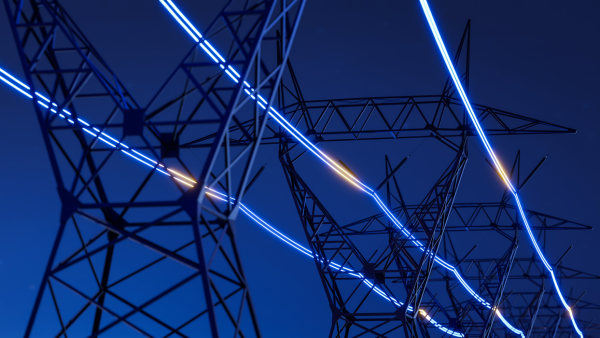As the demand for electric vehicles (EVs) rises, the need for reliable DC fast-charging infrastructure becomes increasingly critical. DC fast-charging stations, which significantly reduce the time it takes to recharge an EV, almost always require a connection to the electrical grid. However, establishing these connections is a complex process that involves multiple stakeholders and a deep understanding of local regulations and infrastructure.
This article will provide an overview of the essential factors to consider when assessing potential DC fast-charging sites for grid connectivity. From understanding what a grid connection entails to the challenges of securing a connection, this guide aims to equip you with the knowledge needed to make informed decisions for your charging station investment.
What is a Grid Connection?
The electrical grid is an expansive network that delivers electricity from producers to consumers. It spans entire countries and even continents, making it a vital component of modern infrastructure. A grid connection refers to the link between your charging station and the electrical grid, enabling you to access the power needed to operate your facility.
In the context of EV charging, a grid connection is crucial for delivering energy to vehicles. Without it, a charging station cannot function unless it’s powered by an alternative energy source, such as on-site renewables.
Expanding DC Charging Infrastructure
The global demand for DC fast charging is surging, driven by the rapid adoption of electric vehicles. Industry projections estimate that the EV charging infrastructure market will exceed $150 billion by 2030. As the market grows, so does the need for more grid connections to support the expanding network of fast-charging stations.
Modern EVs, particularly those launching in the next few years, are increasingly capable of handling higher power outputs from fast chargers. For instance, many vehicles in the 2023-24 lineup can charge at 65 to 70 kW, with some high-end models exceeding 100 kW. This trend highlights the importance of expanding DC fast-charging infrastructure, which depends heavily on reliable grid connections.
Why DC Fast Charging Infrastructure Needs Grid Connections
While alternative energy sources like solar or wind can supplement a charging station’s power supply, most DC fast chargers rely on grid connections to ensure consistent and reliable operation. The location of your charging station will significantly impact the ease and cost of securing a grid connection. For example, establishing a connection in a densely populated urban area is often more straightforward than in a remote rural location.
The quality of your grid connection is also crucial. DC fast chargers require substantial amounts of energy, and the accessibility of a robust grid connection can influence both startup costs and ongoing maintenance expenses.
Establishing Grid Connections
Grid connections in the U.S. are established through the infrastructure managed by local electric utilities. These utilities are responsible for the operation and maintenance of distribution systems, including power lines, transformers, and substations, which deliver electricity to homes and businesses.
The cost and efficiency of establishing a grid connection largely depend on the distance between your charging station and the nearest substation. The further away your station is, the more expensive and potentially less efficient the connection will be.
In the U.S., electric utilities are regulated by state-level Public Utility Commissions (PUCs), which oversee the utilities’ operations, including grid connections. These utilities own and operate the infrastructure necessary to deliver electricity and are key partners in connecting your DC fast-charging station to the grid.
Alternatives to Grid Connection for DC Fast-Charging
While most DC fast-charging stations rely on grid connections, some providers are exploring alternative power sources. For instance, integrating on-site renewable energy, like solar panels, can partially power a charging station. However, these alternatives often cannot fully replace the need for a grid connection, especially during periods of high demand or low renewable energy production.
What to Consider When Procuring a Grid Connection
When evaluating potential locations for your DC fast-charging station, consider the following factors:
- Electricity Requirements: Determine how much electricity your station will need based on the number and type of chargers you plan to install.
- Competition for Grid Supply: Assess whether there is local competition for grid access, which could impact the availability and cost of electricity.
- Site Scouting: Use tools like Geographic Information Systems (GIS) and online distribution network maps to identify locations with suitable grid access. Partnering with experienced charge point operators (CPOs) can also help streamline this process.
How to Connect to the Grid
Securing a grid connection for your DC fast-charging station is a complex process that involves multiple stakeholders, including CPOs, electric utilities, energy regulators, investors, and public authorities. The steps typically include:
- Researching grid connection options based on your station’s size, demand, and location.
- Submitting an application and paying the associated fees to your local electric utility.
- Collaborating with your utility and business partners to design the connection.
- Building and connecting to the grid.
- Maintaining the connection through an agreed payment plan with your utility company.
Conclusion
Establishing a grid connection for DC fast-charging stations is a critical step in expanding EV infrastructure. By understanding the intricacies of the grid, scouting for optimal locations, and collaborating with key stakeholders, you can secure the necessary connections to power your charging stations and contribute to the growth of the EV market.
At ChargeTronix, we are committed to supporting the development of EV charging solutions. Our expertise in site selection, grid connectivity, and infrastructure development ensures that your DC fast-charging stations are not only efficiently connected to the grid but also positioned for long-term success in the rapidly evolving EV landscape. Partner with ChargeTronix to power the future of electric mobility.
